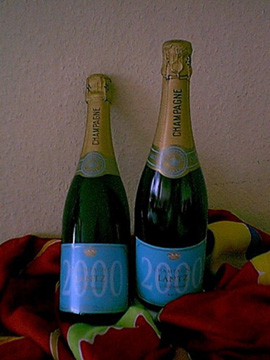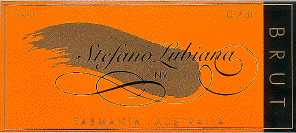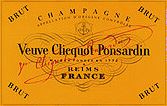
Issue 1 March 2001

Issue 1 March 2001

Monique Charpentier, aged 50, has been just named Head of Cellar at Champagne Mercier. She succeeds Alain ParenthoŽn and is the latest in a long line of ChÍfs du Cave of France's favourite house since its foundation in 1858.
Though the Veuves (widows) of Champagne have been famous throughout the history of the wine, this is the first time that a woman oenologist has been given the responsibilty for the development of Champagnes of such a large house.
Mme. Charpentier says she creates her Champagnes with constant attention and an almost maternal care. Continuing in the style of her predecessors, she attempts to perpetuate the quality and the style of the House by producing fresh, fruity, intense and spontaneous Champagnes.
Born in Champagne, Monique began her career in 1971 in the oenological laboratory of MoŽt & Chandon. In 1974 she obtained her degree for the profession of Oenologist and consequently became involved in the making of the wines.
Thereafter, Mme. Charpentier studied the chemical proccesses in malolactic fermentation. From 1984, she was in charge of a project which aimed to find the best yeasts for the production of Champagne. These yeasts are used in the production of Mercier today.
Monique also developed the panel of sensory analysis; this tool makes it possible to collect invaluable comparative information on the wines.
Married with three children, she says that in many ways, winemaking comes naturally to a woman: "the wine grows like a child. It is accompanied and one guides it with the same attention throughout its life".
Pommery has broken with tradition and launched a split-sized Champagne designed to be drunk out of the bottle! Called POP, the bottle has a straw attached (use of which is optional).
Aimed squarely at the nightclub market, the 20 cl bottle comes in garish blue and silver packaging, and is "the first ever specially blended Champagne designed to be easily drunk through a straw and to fit snugly in hand, allowing you to move freely and confidently around the venue in style! Those in the know have been spotted sipping the Champagne through straws from small, mysterious blue bottles at the most exclusive night-spots in town."
Personally, I think Champagne should, at the very least, always be consumed from 19th century ornate transparent green Bohemian crystal flutes, enamelled with vines and heraldic motifs and gilt!
POP even has its own extremely elaborate, interactive Flash-laden website which is quite fun, if you can stand the pounding "music".
Three men made £4m ($6m) by exploiting rumours of a Champagne shortage for the Millennium celebrations last year. In 1996 and 1997 they persuaded thousands of investors to pay £30 a bottle for "high quality Champagne Lantz" from the "House of Delacroix" that would be auctioned in late 1999 by Sotheby's and Christie's at a profit of about 35% to bidders anxious not to run out for the New Year. Their advertising slogan was "The biggest party for a thousand years is about to run out of fizz!"
But the wily Champenois had a billion bottles of Champagne in their cellars, and "Champagne Lantz was low grade fizz, costing less than £5, that no reputable Auctioneer would touch", Southwark Crown Court in London was told, and investors lost more than £4m. The "Paris-based" House of Delacroix was found to have operated from South-West London. The three men drew "unusually large amounts of cash" from the Delacroix bank account.
Craig Dean, 35, of Redditch, Worcestershire, England, was convicted of conspiracy to defraud, and will be sentenced on March 6th, while two others, Lee Rosser, 31, of Bournemouth, England, and Julian Blee, 32, of Luton, England, admitted the charges. Rosser was jailed for 18 months, and Blee for one year. In October 2000, Rosser was jailed for seven years and Blee for four years over a £6m whisky investment scam. Their new jail terms will be served consecutively.
For a shocking list of other wine "investment" scams click here
The tiny Australian winery of Stefano Lubiana has received a warning from lawyers representing the mighty house of Veuve Clicquot Ponsardin about "passing off" its Tasmanian bubbly as Veuve Clicquot Yellow Label Champagne.
In contention is the colour of Lubiana's label (pictured above left, in case you can't tell which is which). Clicquot contends that its "Clicquot orange" is in itself a trademark, and that consumers could confuse the Tasmanian methode traditionelle $15 (UK £10) bubbly with its own revered (and expensive) Champagnes.
Steve Lubiana, proprietor of the Australian winery, said "We recognise people's intellectual property and trademark rights, but there is no customer confusion between our packaging and that of Veuve Clicquot Ponsardin. This matter is not yet settled."
©2001 Re-Vision Web Design

